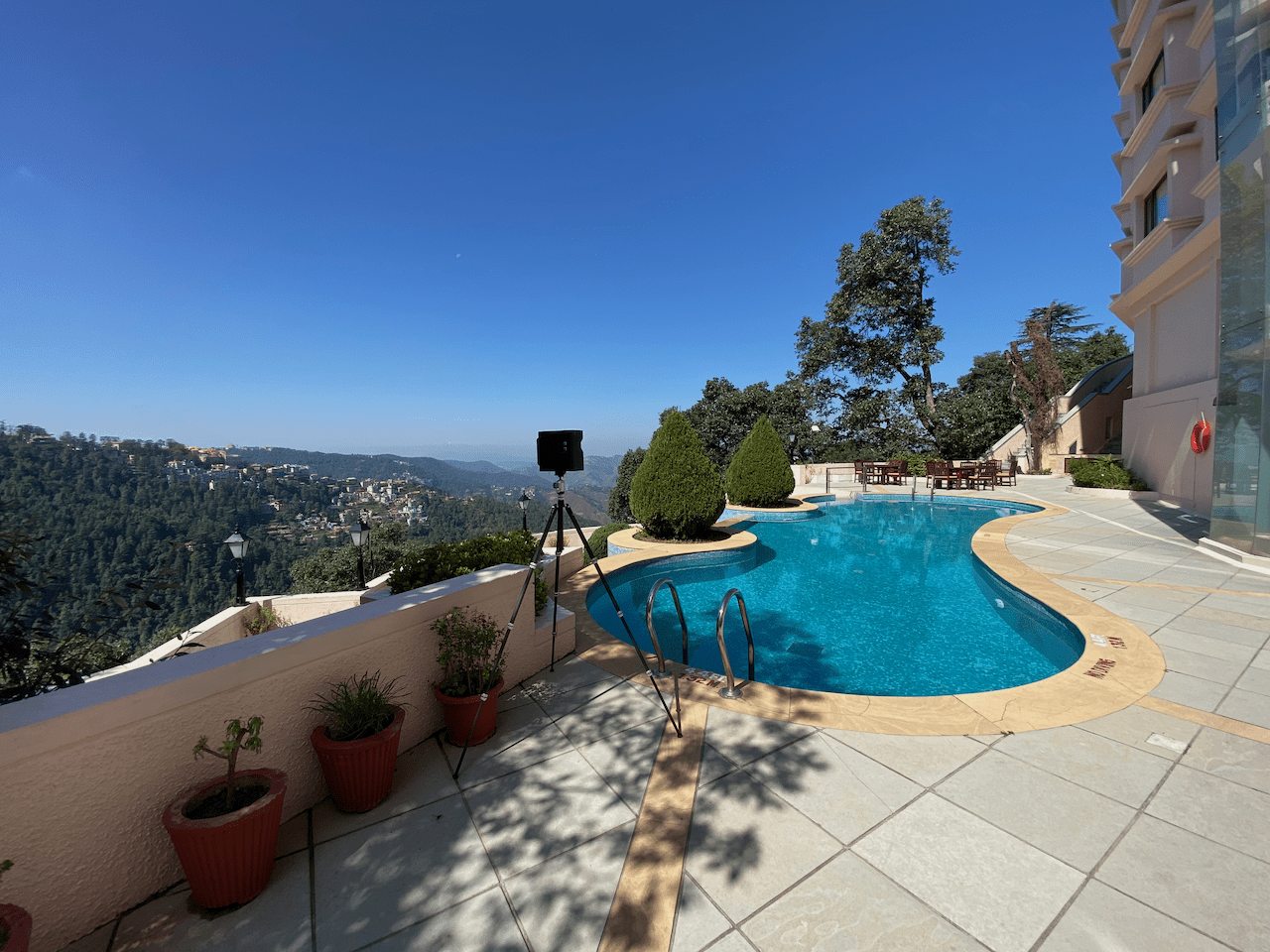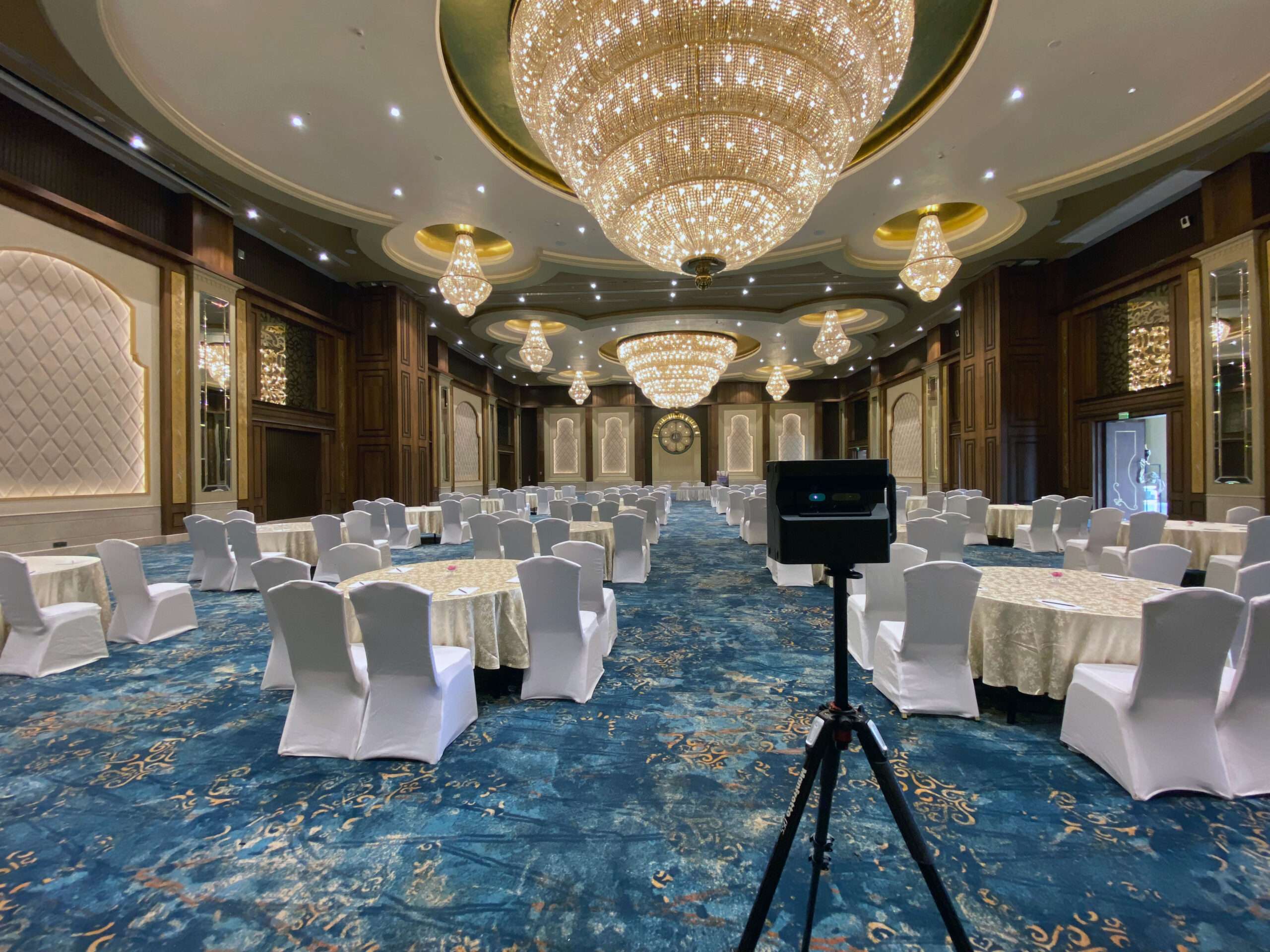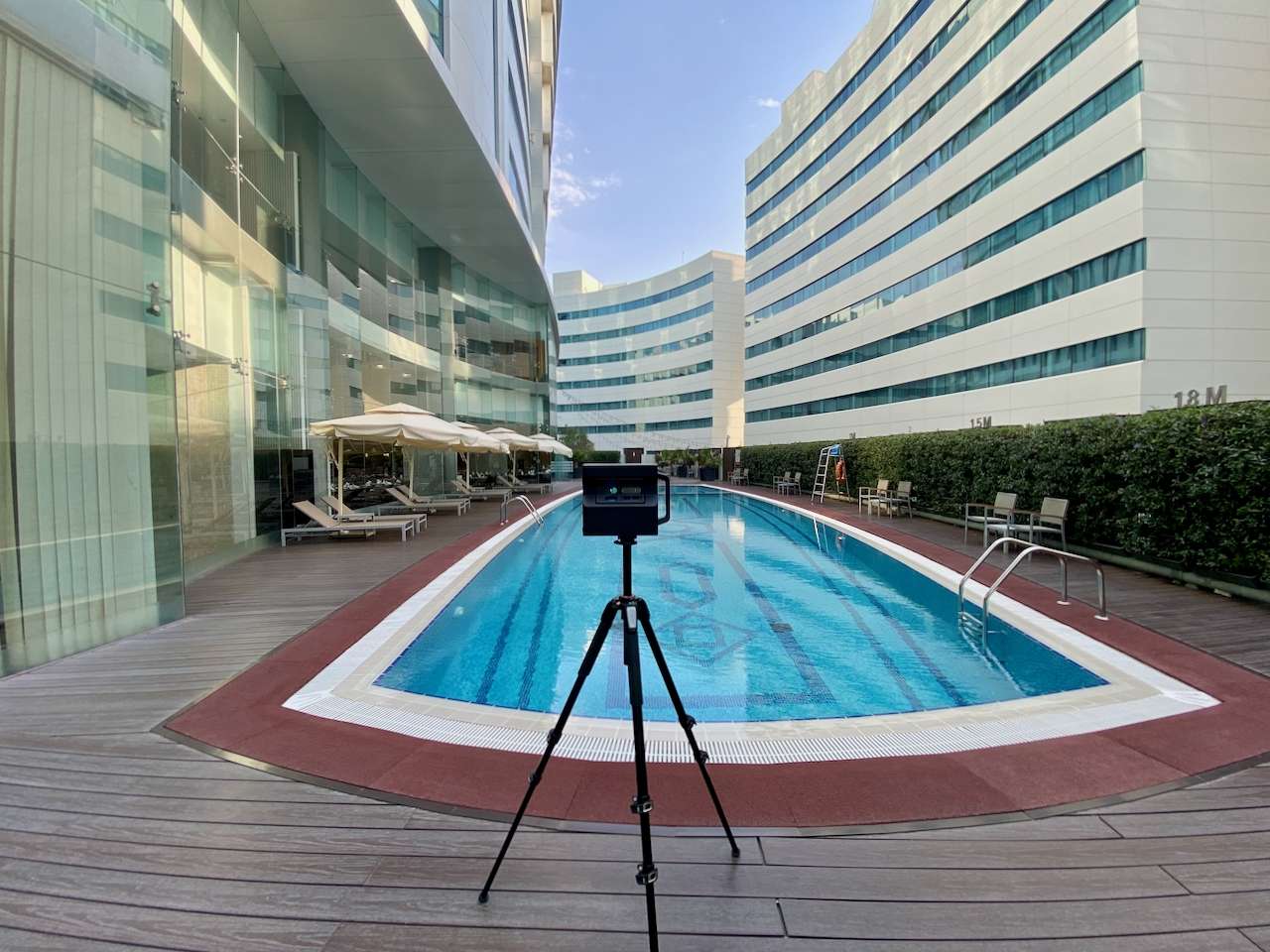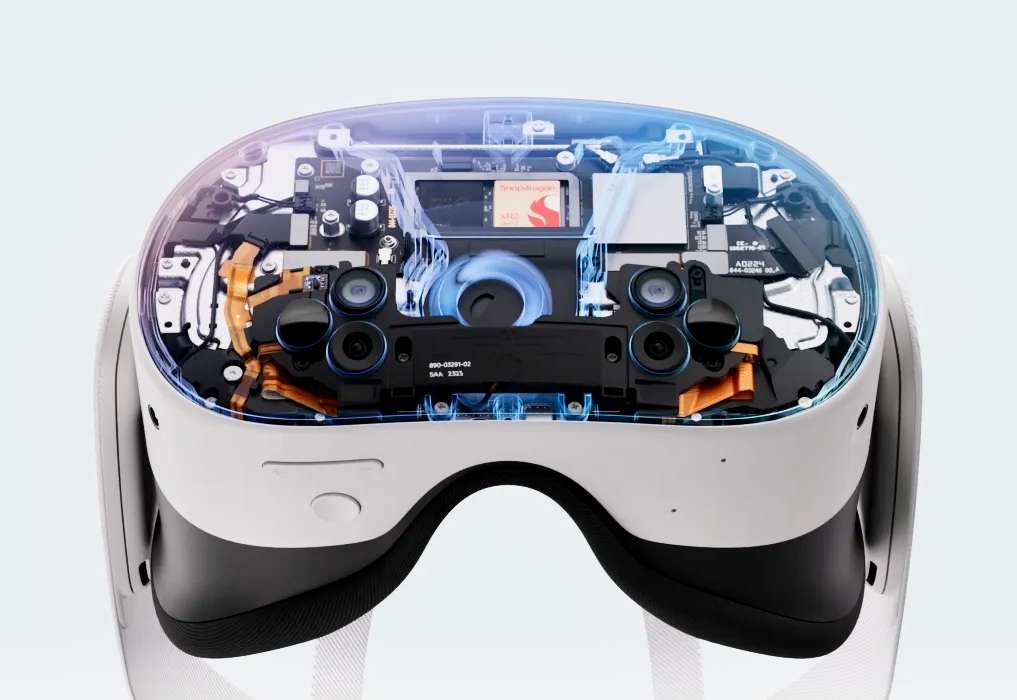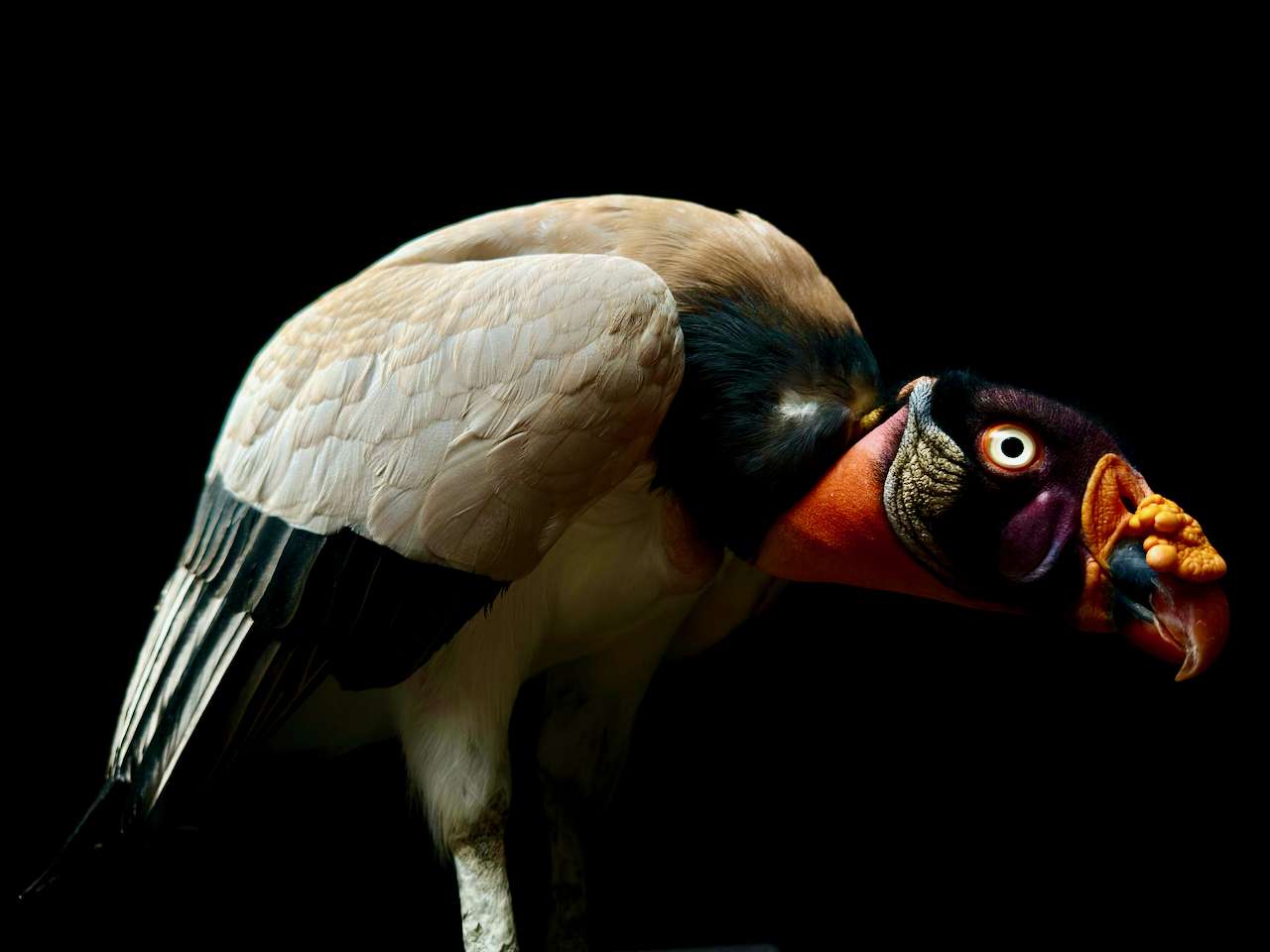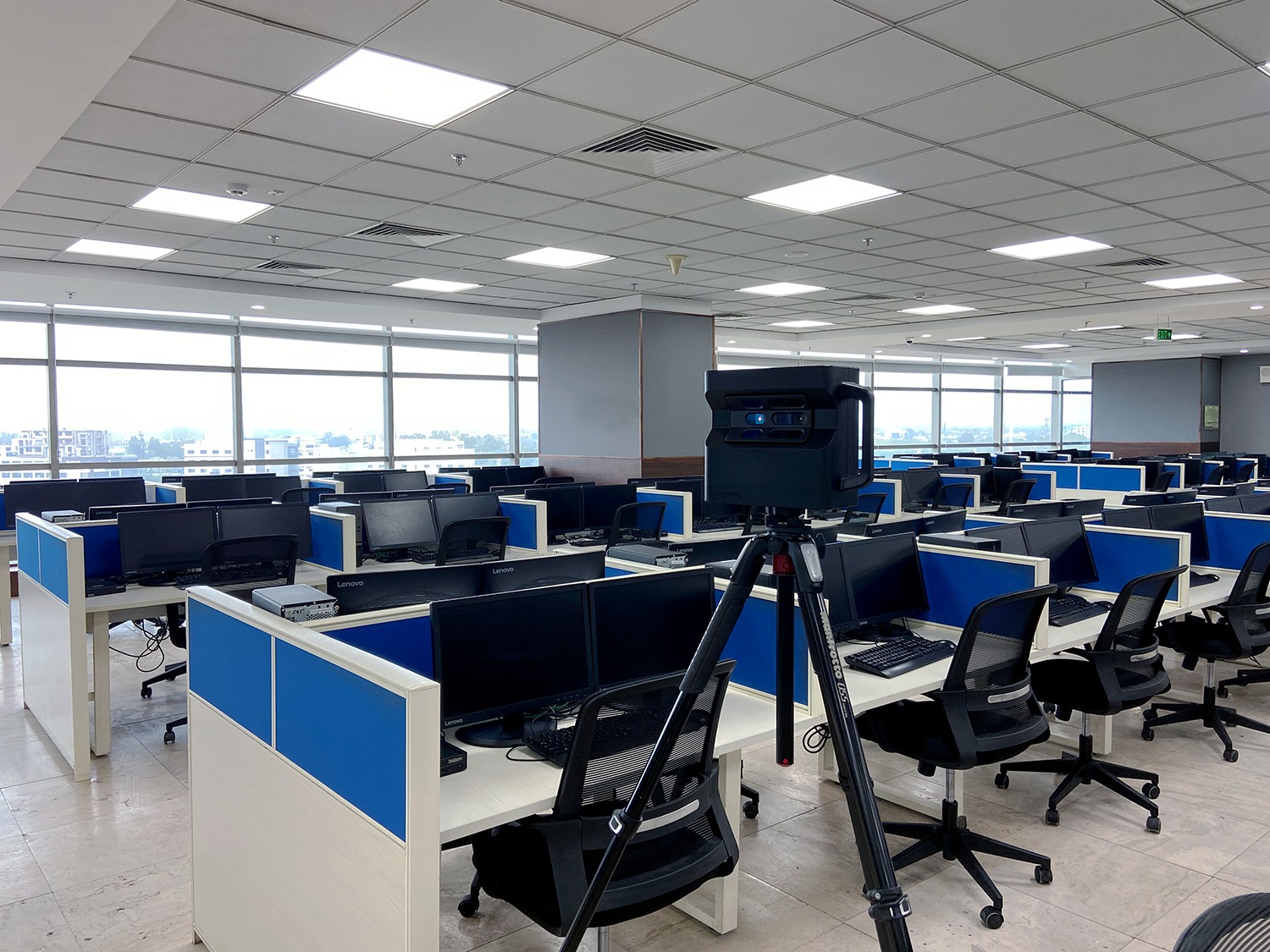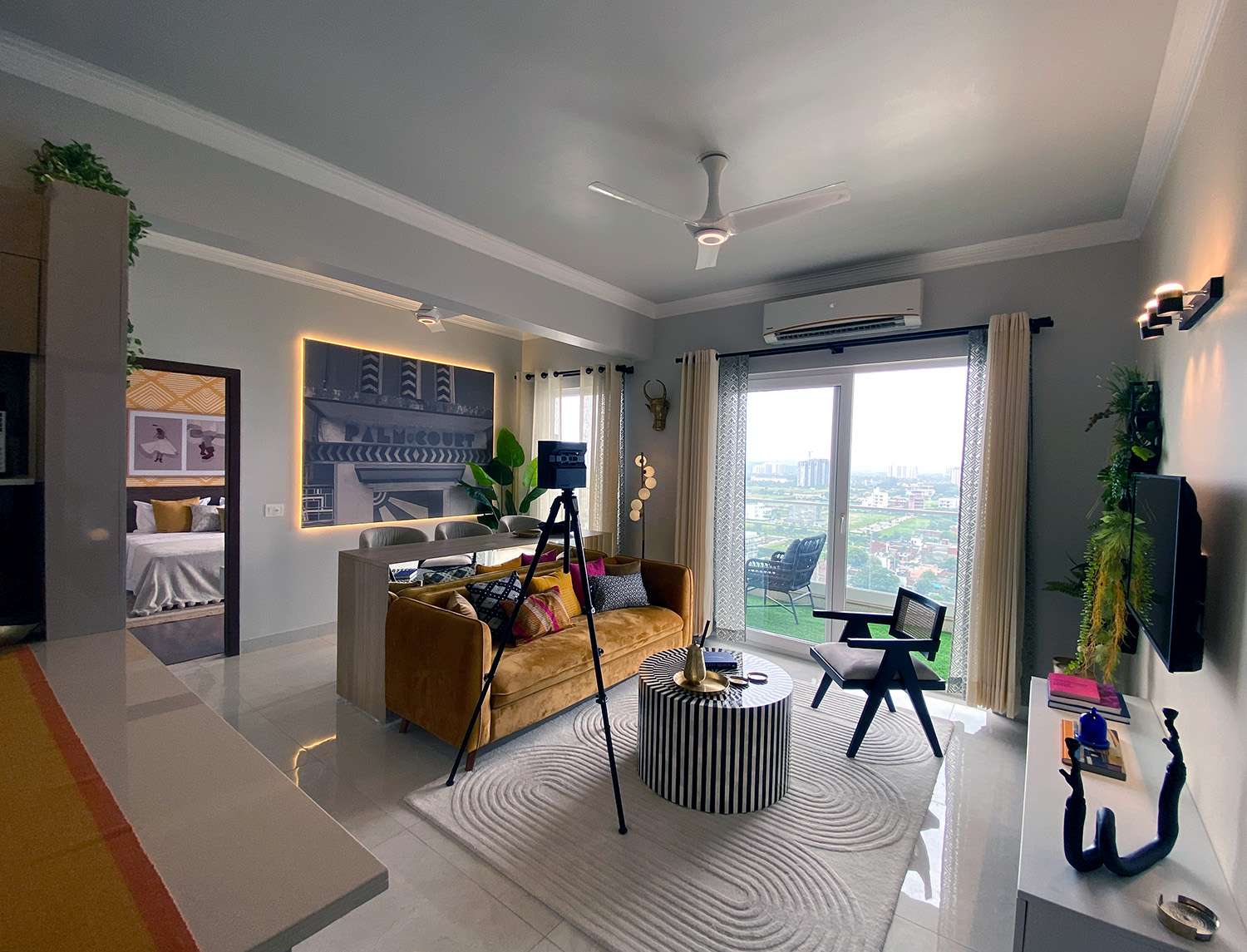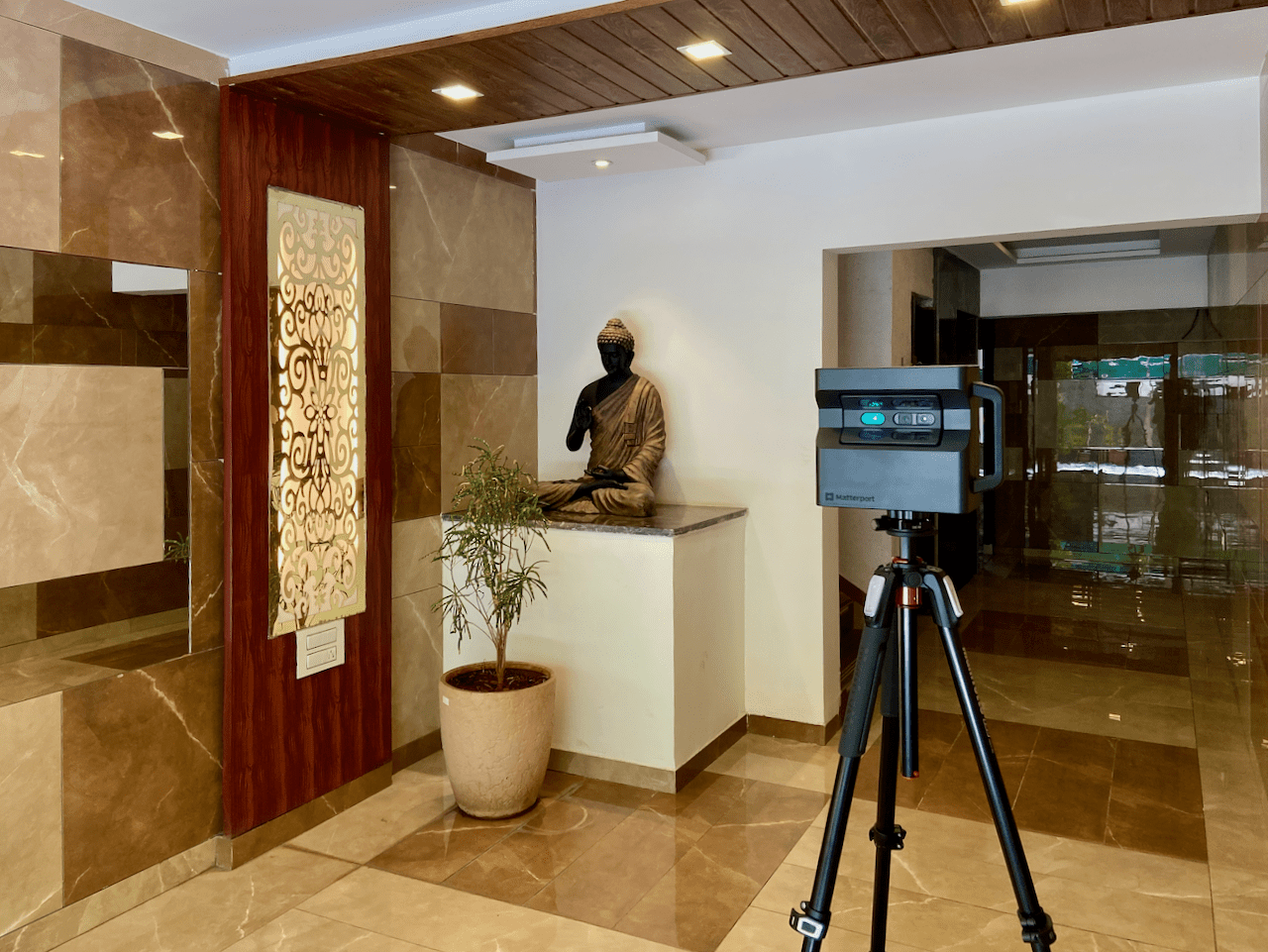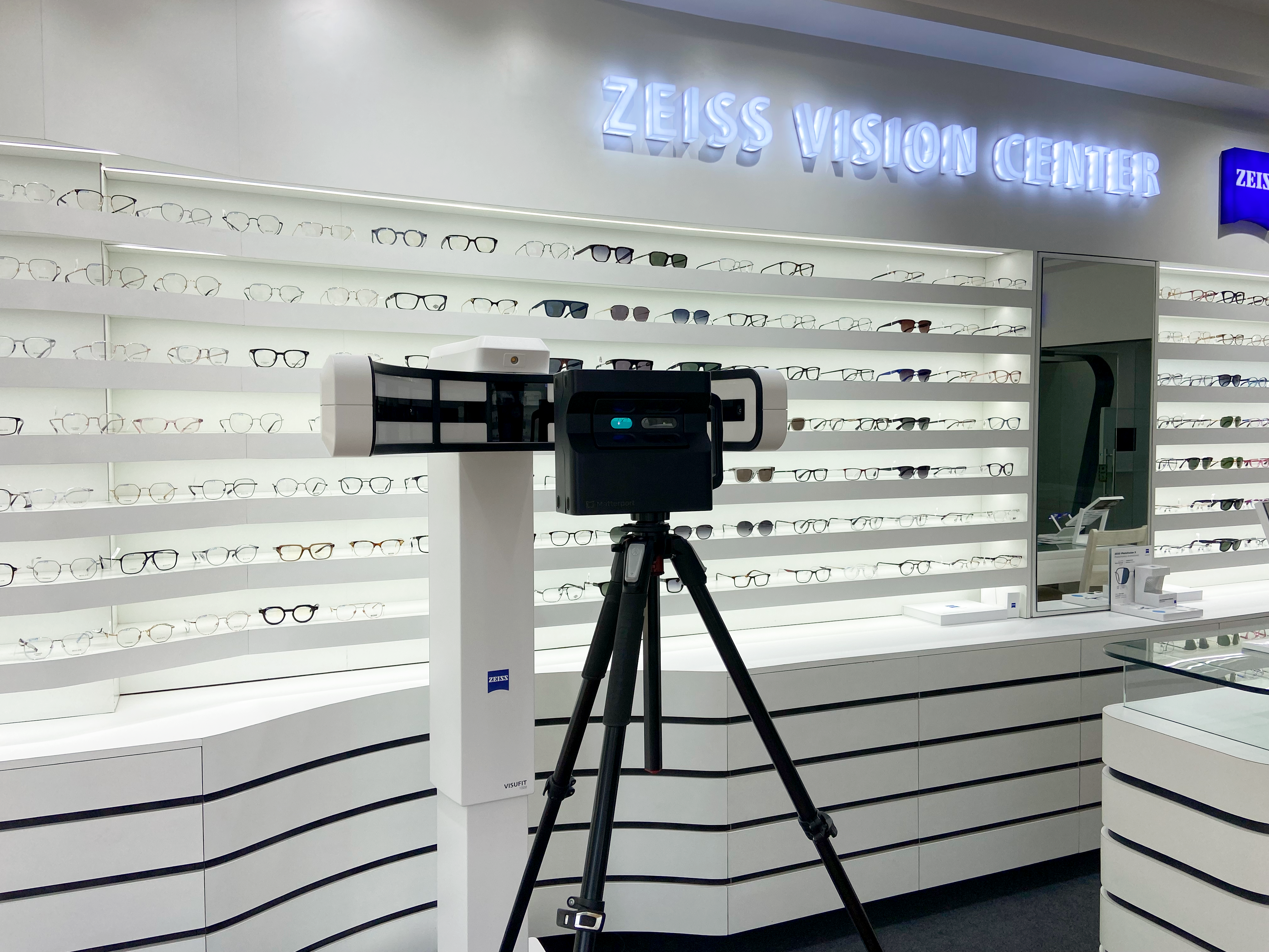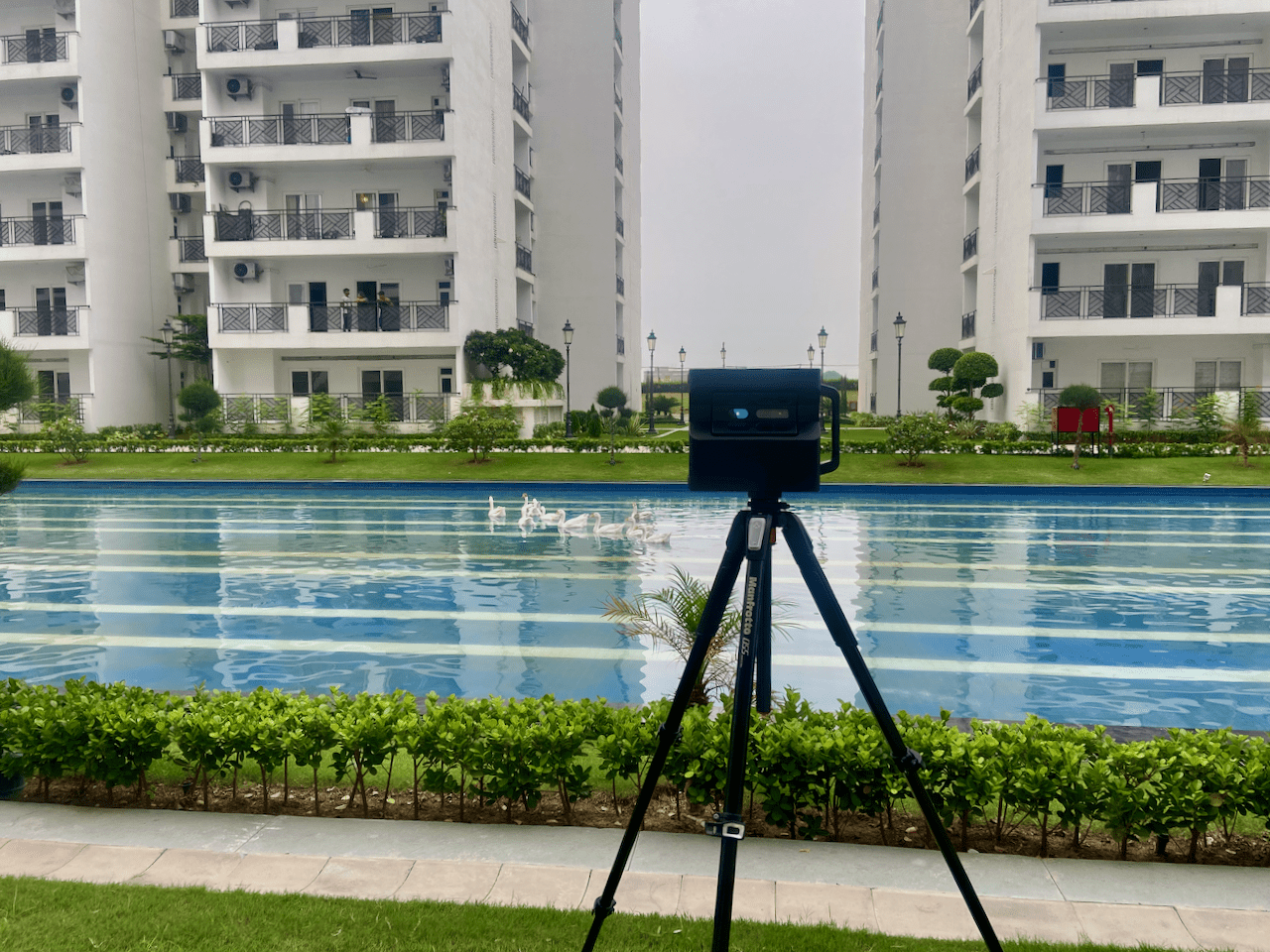360-degree images or panoramas can now be added to Matterport virtual tours. If the starting point is a 360-degree image (and not a 3D scan) then the viewer will have to click on the walkthrough icon to begin the tour.
Let’s look at what this could potentially mean for those who already employ Matterport tours or planning to.
Vision Pro
With all eyes on the upcoming Apple device, businesses are preparing their content to be MR-headset friendly. Here are some features at a glance:
- The headset gives life-size views of your computer apps like browser windows.
- Movies like an IMAX theatre at the original resolution it was captured with.
- 180-degree videos at 8K resolution.
- Immersive 3D movies with spatial audio or paired with the AirPods Pro.
- Capture panoramic images or videos with the Vision Pro headset, with the button on top. Spatial videos can also be captured with the iPhone 15 Pro.
- Life-size screen sharing in video calls. Can be great for presentations.
- Micro-OLED display system with eye tracking. Just look at a different window to switch to it.
- M2 processor with a separate R1 chip to manage the cameras, sensors and microphones.
- LiDAR scanner to create a 3D map of the surroundings, to display windows accordingly.
- Infrared sensors for hand tracking.
- Integrated cooling system.
- External battery, so that the weight is not passed on to the head and neck.
- VisionOS SDK to develop with Xcode. RealityKit 3D rendering engine and ARKit APIs.
- SwiftUI to add functionalities like 3D interaction to iOS apps.
- Unity’s existing apps can be brought to VisionOS with frameworks like XR Interaction Toolkit.
Asmi Jain from Indore is a winner of the Swift Student Challenge, who was appreciated by Tim Cook. Her idea was to track eye movements to help strengthen the eye muscles of the user. There will be many more apps that leverage this innovative eye-tracking feature soon.
To develop apps for visionOS in Xcode, you’ll need Apple silicon Macs – M1 and above. Among MacBooks, the latest M3 Max’s top configuration is around 7.5 lakhs.
Matterport allows anyone to create a virtual tour using their smartphone (and the free SaaS plan) – if the device is a Pro model with LiDAR, even better. Panoramas captured with an iPhone or Vision Pro headset can be exported manually and then added to a Matterport virtual tour.
With Matterport compatibility limited to Meta Quest 2 and Pro, the Apple Vision Pro would make things easier for a VR experience. Now, a regular browser will do and we’ll also be able to see Mattertags.
Other Cameras
Panoramic images captured from mirrorless and other dual fish-eye lens cameras such as the GoPro Max can also be imported into Matterport tours. They may be relevant if someone wants to add gigabit panos or underwater stills, to a Matterport tour.
The problem with 360 images is that they are not clickable like 3D scans. However, in the highlights reels, it would be a great slideshow.
For example, if we scan a swimming pool of a gated community – the same panoramic image can be used in the virtual tours of multiple villas and apartments. The same goes for promoting different types of rooms in a luxury hotel.
For those highly-talented DSLR photographers, this is great news because your lifestyle images could possibly be added to our tours. If your equipment includes an 18-55mm fisheye and a Nodal Ninja, even better. Sky is the limit.
Flying High
Speaking of skies, panoramic images from drones can also be added to the virtual tours. Refer to DGCA’s DigitalSky FAQs for the process to transfer the UIN because the media is considered as ‘commercial usage’.
Aerial photos from devices such as the Skydio 2 or DJI Mavic 3 Cine can be added as 360° images in a Matterport tour as well. In some cases, a blackened area in the tour (like a swimming pool) can be filled up with a 360-degree image, when converted to a 3D scan.
Phase One’s 150 MP iXM-SP150 is designed for wide-angle, low-earth orbit captures. The P3 iXM is a more affordable option that’s payload drone mountable. In terms of image clarity and resolution, these cameras set the bar.
And then we have the LiDAR scanning Leica BLK2FLY:
Irrespective of the camera used, the Apple Vision Pro is going to make panoramic media more accessible. Think of affluent markets in Gurgaon or Mumbai – someone would love to see a Matterport virtual tour of a potential home for sale with this headset. The ability to look around (with a panoramic image) is different from watching a video on a giant screen.
The headset is still not available in the Apple India stores. When it’s released, we’ll be sure to let you know.
Want to know what’s inside the Apple Vision Pro? Watch this video from one of our favourite YouTubers – iFixit:

